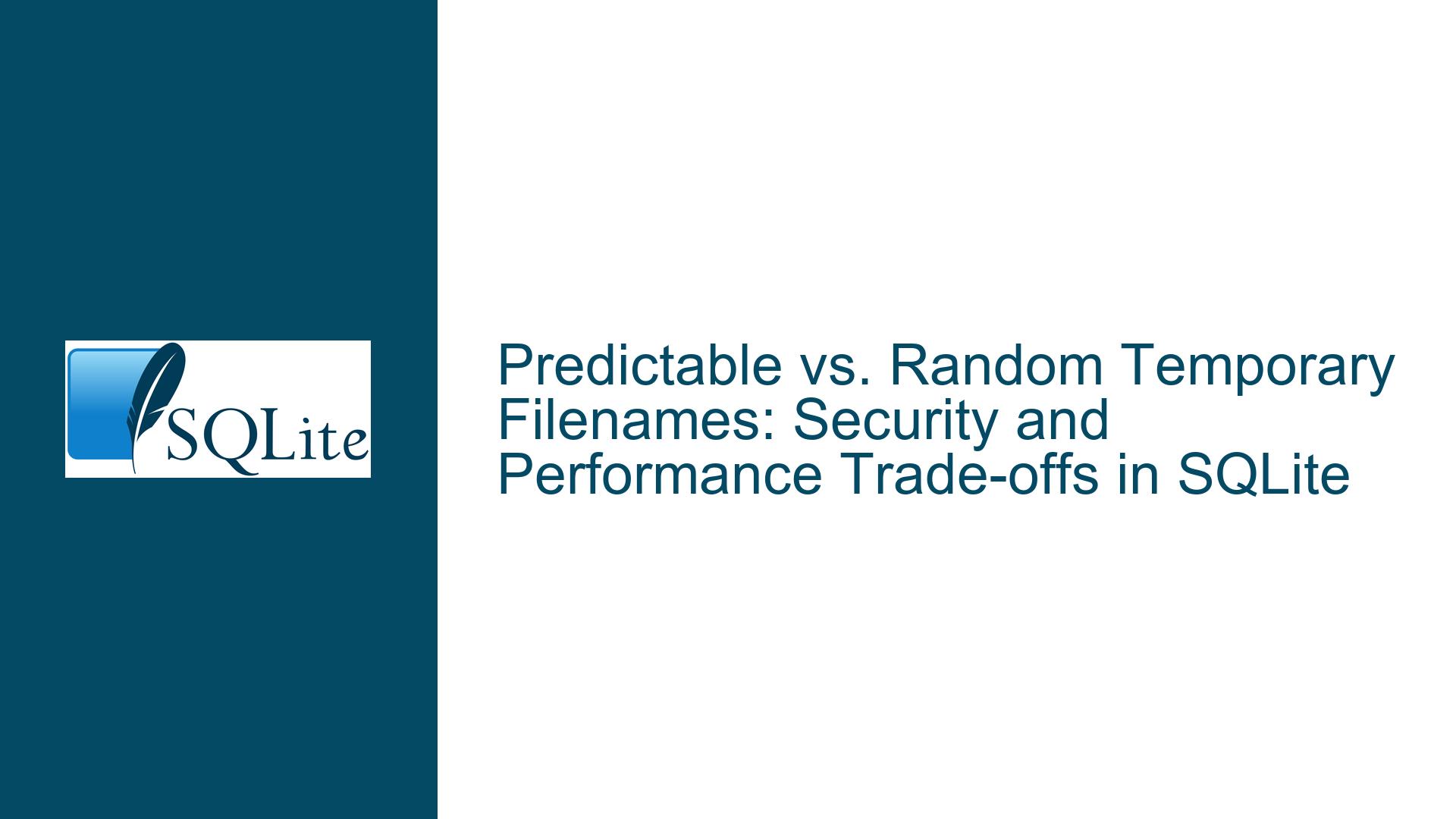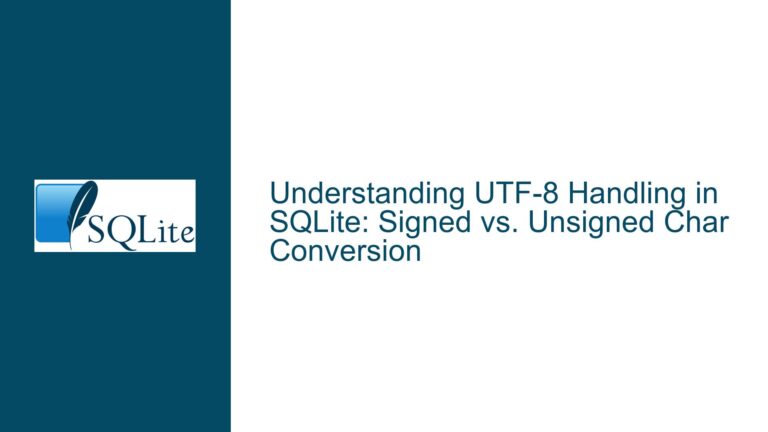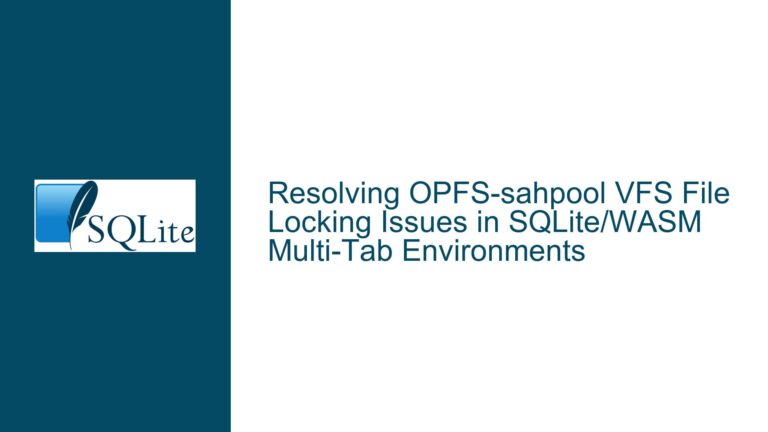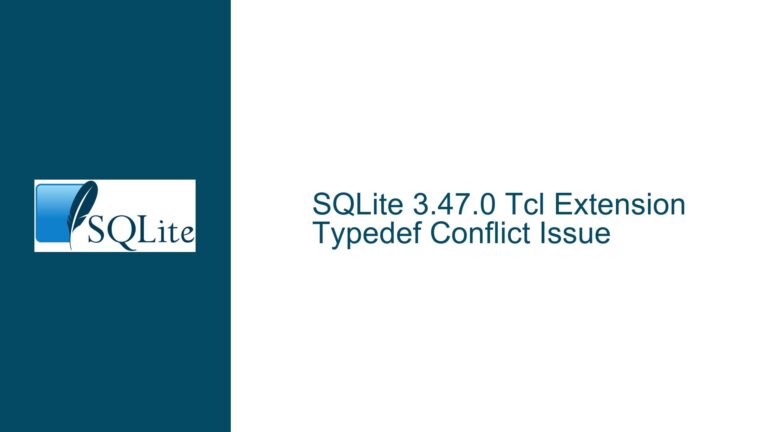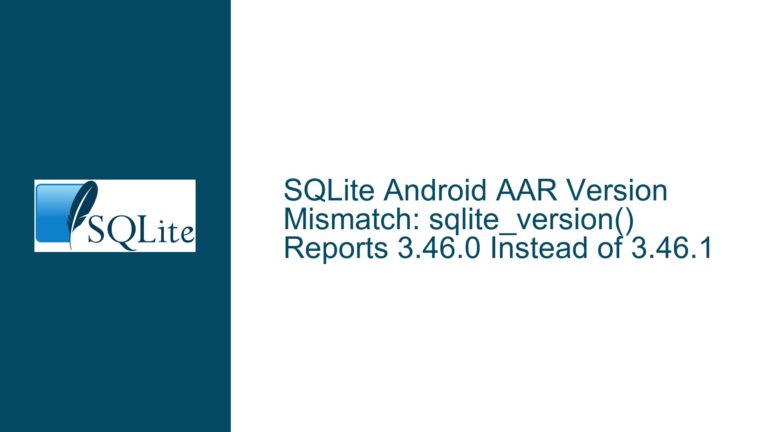Predictable vs. Random Temporary Filenames: Security and Performance Trade-offs in SQLite
The Conflict Between Predictable Naming Conventions and System Vulnerabilities
Issue Overview
The debate centers on whether temporary files should use predictable sequential names (e.g., temp0000, temp0001, …) or randomized identifiers. Proponents of sequential naming argue that it simplifies file management by guaranteeing uniqueness and avoiding directory scans. Opponents highlight two critical flaws:
- Security Risks: Predictable names enable malicious actors to guess filenames, hijack resources, or inject harmful data.
- Performance Overheads: Sequential naming may require multiple file system calls to find an unused name, especially in environments with pre-existing files.
The discussion also explores the feasibility of maintaining a global counter or "catalog" to track temporary files. While a counter could theoretically reduce name collision checks to an O(1) operation, critics note that such systems are inherently fragile in multi-process or distributed environments. Race conditions, filesystem latency, and the lack of atomicity in file creation further complicate this approach.
The core tension lies in balancing simplicity against robustness. SQLite’s use in embedded systems, web applications, and high-concurrency environments demands solutions that minimize vulnerabilities while maintaining efficiency.
Root Causes: Security, Filesystem Dynamics, and Concurrency
Possible Causes
1. Predictable Filename Exploitation
Attackers targeting systems with sequentially named files can:
- Hijack Resources: Pre-create files with expected names to disrupt workflows (e.g., replacing a temporary database journal).
- Data Exfiltration: Guess filenames containing sensitive data if permissions are misconfigured.
- Denial-of-Service (DoS): Flood a directory with files matching the naming pattern, forcing the application into infinite collision checks.
SQLite’s portability exacerbates this risk. A solution viable on a single-user desktop may fail catastrophically in a multi-tenant cloud environment.
2. Filesystem Performance Characteristics
Filesystems vary in how they store and retrieve directory entries:
- B-Tree Based (e.g., ext4, NTFS): Lookup times scale logarithmically (O(log N)) with directory size.
- Linear Search (e.g., FAT32): Lookup times scale linearly (O(N)).
Sequential naming forces worst-case scenarios:
- If
temp0499exists, the application must checktemp0500,temp0501, etc., until an unused name is found. - Randomized names reduce collision probability, often requiring a single attempt.
3. Lack of Atomicity in File Creation
Even with a global counter, concurrent processes may clash:
- Process A reads the counter (value: 500).
- Process B reads the counter (value: 500).
- Both processes attempt to create
temp0500, resulting in a race condition.
Filesystems typically lack atomic "create-if-not-exists" operations, necessitating additional safeguards like file locking or retry loops.
Mitigating Risks: Secure and Efficient Temporary File Strategies
Troubleshooting Steps, Solutions & Fixes
1. Adopt Cryptographically Secure Randomization
- Generate Random Suffixes: Use cryptographic libraries (e.g.,
SQLITE_RANDOMNESS) to create 16+ character suffixes. Example:temp_7a3e9b1cinstead oftemp0500. - Collision Probability: For a 128-bit random suffix, the probability of collision is negligible (≈ 2.7×10⁻²⁰) even with billions of files.
2. Leverage Filesystem-Specific Features
- Temporary Directories with Sticky Bits: Use system-designated temp directories (e.g.,
/tmpon Unix,%TEMP%on Windows) where the OS enforces security policies. - O_EXCL Flag: On Unix-like systems, combine
O_CREATandO_EXCLflags to atomically create a file, failing if it exists.
3. Implement a Hybrid Counter-Random Approach
- Initial Random Seed: Start with a random base number (e.g.,
temp7123) and increment sequentially (temp7124,temp7125). - Process Isolation: Assign unique base numbers per process using process IDs or startup timestamps.
4. Centralized Registry with Locking
- Database-Backed Counter: Store the last-used number in a dedicated SQLite table. Use transactions with
BEGIN EXCLUSIVEto prevent race conditions:BEGIN EXCLUSIVE; INSERT INTO temp_counter (id) VALUES (NULL); SELECT last_insert_rowid(); COMMIT; - In-Memory Counters with Mutexes: For single-process applications, maintain a global counter protected by mutexes.
5. Fallback to Retry Loops with Exponential Backoff
When collisions occur:
- Random Delay: Wait for a random interval before retrying to reduce contention.
- Max Attempts: Abort after 10–20 attempts to avoid infinite loops.
6. Avoid Temporary Files Entirely Where Possible
- In-Memory Databases: Use
:memory:for transient data. - Write-Ahead Logging (WAL): Rely on SQLite’s WAL mode to reduce temporary file dependencies.
7. Security Hardening
- File Permissions: Restrict temporary files to the least privileges (e.g.,
chmod 600on Unix). - Secure Deletion: Overwrite file contents before deletion to mitigate forensic recovery.
8. Benchmarking and Monitoring
- Stress Tests: Simulate high-concurrency scenarios to measure collision rates.
- Filesystem Profiling: Use tools like
straceorProcess Monitorto audit file creation latency.
By prioritizing unpredictability, leveraging atomic operations, and understanding filesystem limitations, developers can mitigate the risks inherent in temporary file management. SQLite’s lightweight design encourages minimalism, but robust solutions demand a nuanced approach tailored to the deployment environment.
